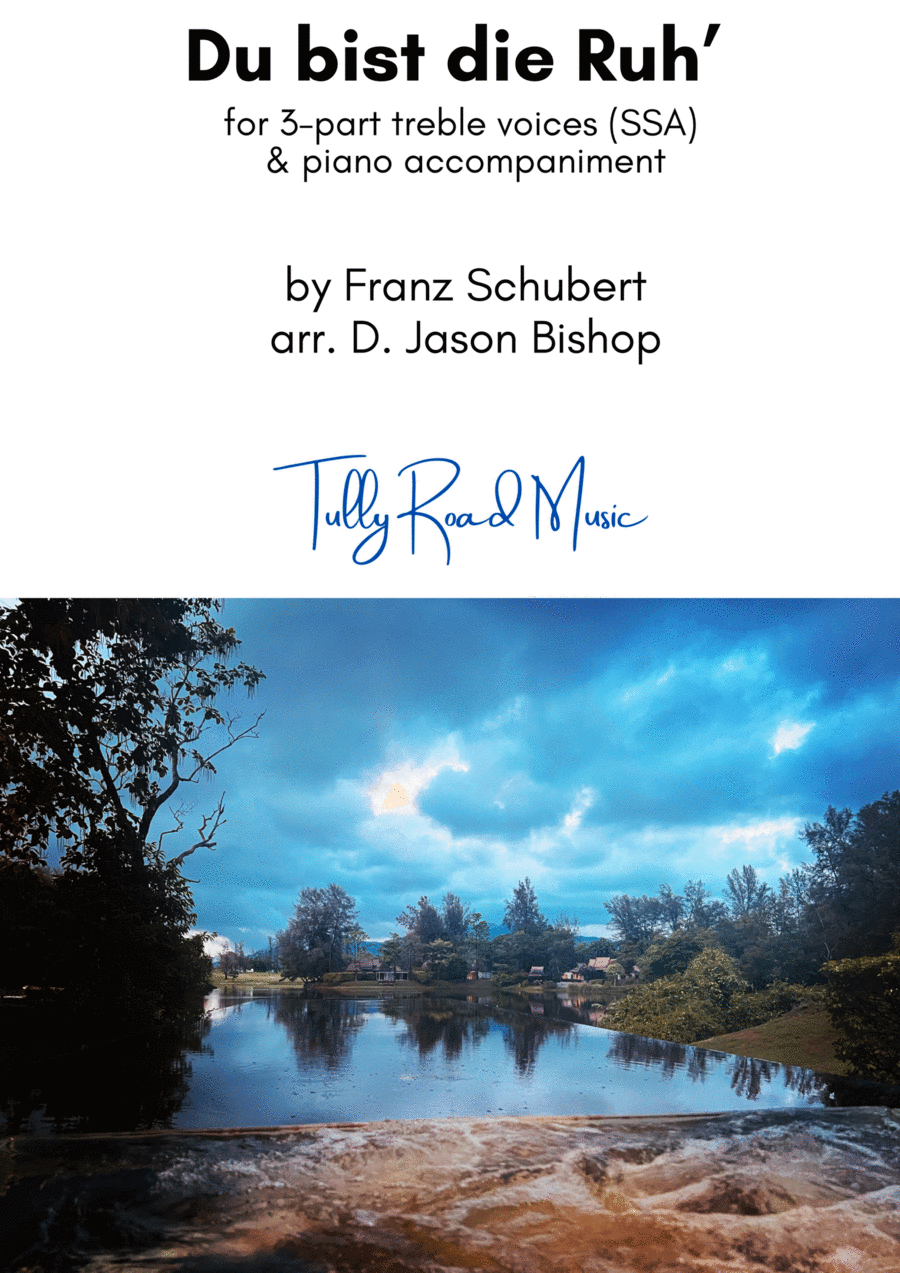Choral Choir,Choral (SSA) - Level 2 - Digital Download SKU: A0.1348279 Composed by Franz Schubert. Arranged by D. Jason Bishop. 19th Century,Classical,Instructional,Romantic Period. 10 pages. Tully Road Music #933063. Published by Tully Road Music (A0.1348279). âDu bist die Ruhââ (D. 776; Op. 59, No. 3) is one of many Lieder for solo voice and piano written by Franz Schubert (1797-1828), with text by Friedrich Rückert (1788-1866). Although Rückert did not originally give the poem a title, Schubert titled his song after its first line, âDu bist die Ruhâ,â and Rückert later titled his poem âKehr ein bei mir,â or âStay with me.â With a simple yet beautiful melody, sung with a seemingly uninterrupted legato, Schubert conveys the sense of âcalmâ and âpeaceâ the poet feels in the companionship of his beloved. So many of the Lieder by 19th-century composers like Schubert and Schumann, chief proponents of the genre, lend themselves well to rearrangement for multiple voices. Here, D. Jason Bishop makes one of the most frequently performed German Lieder available to treble ensembles in an SSA arrangement that preserves both the melodic integrity of the song as well as its original piano accompaniment. It is also available in TTB.
